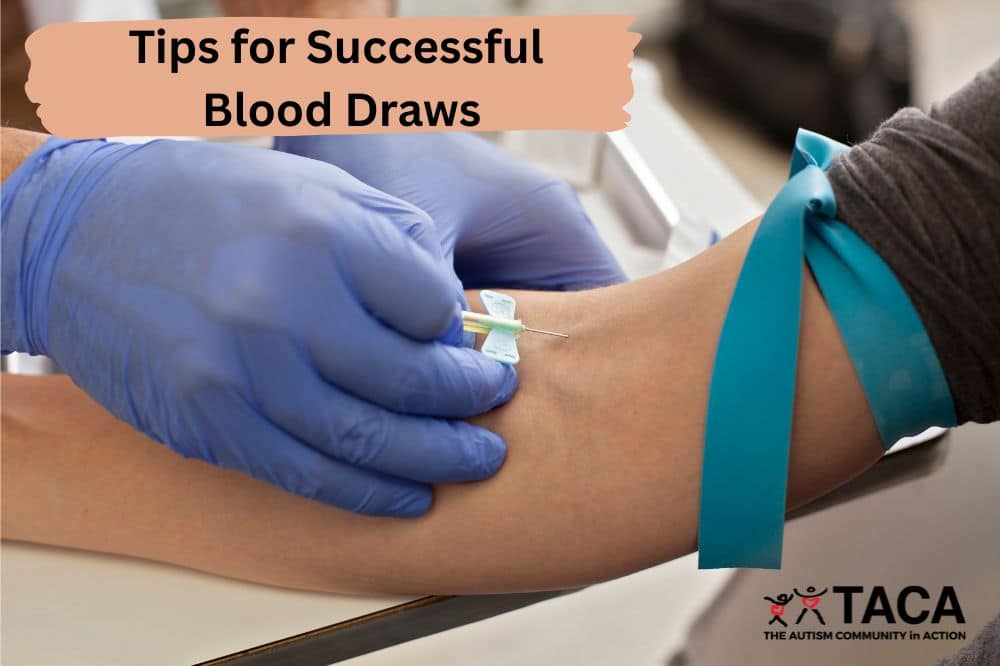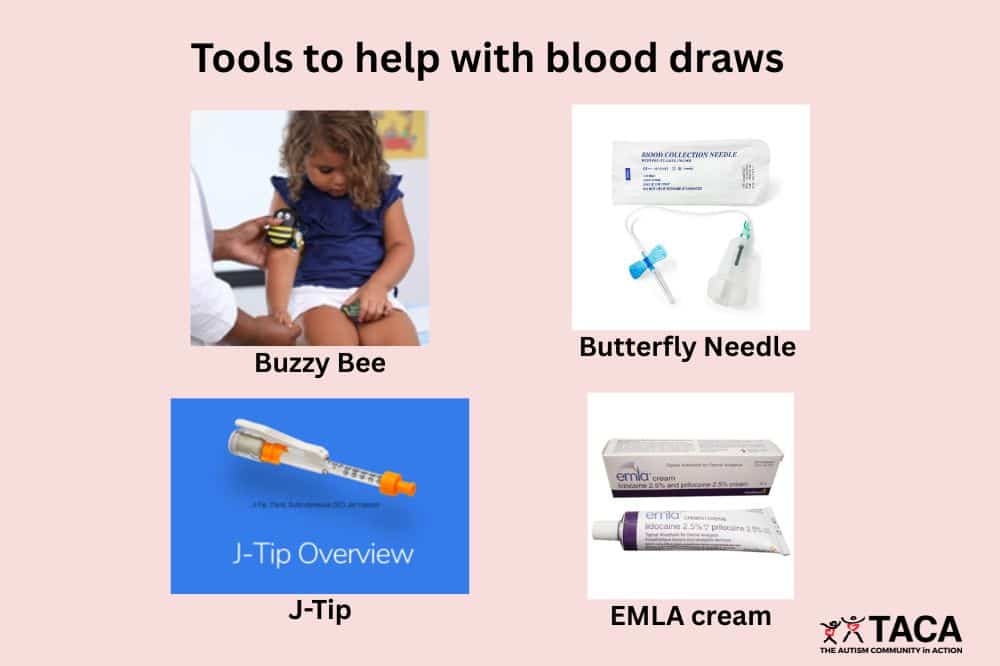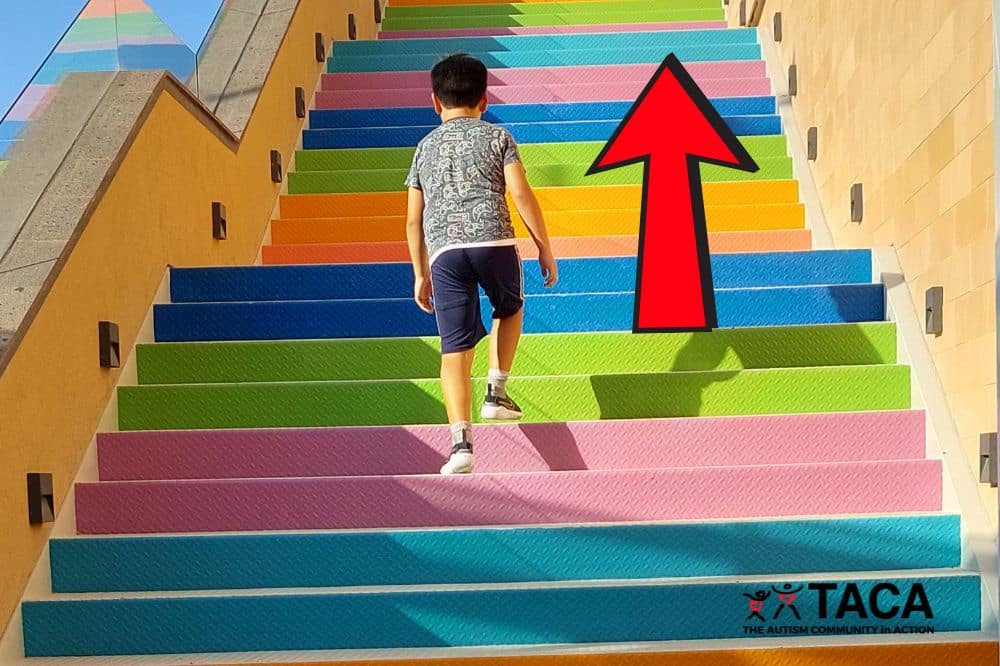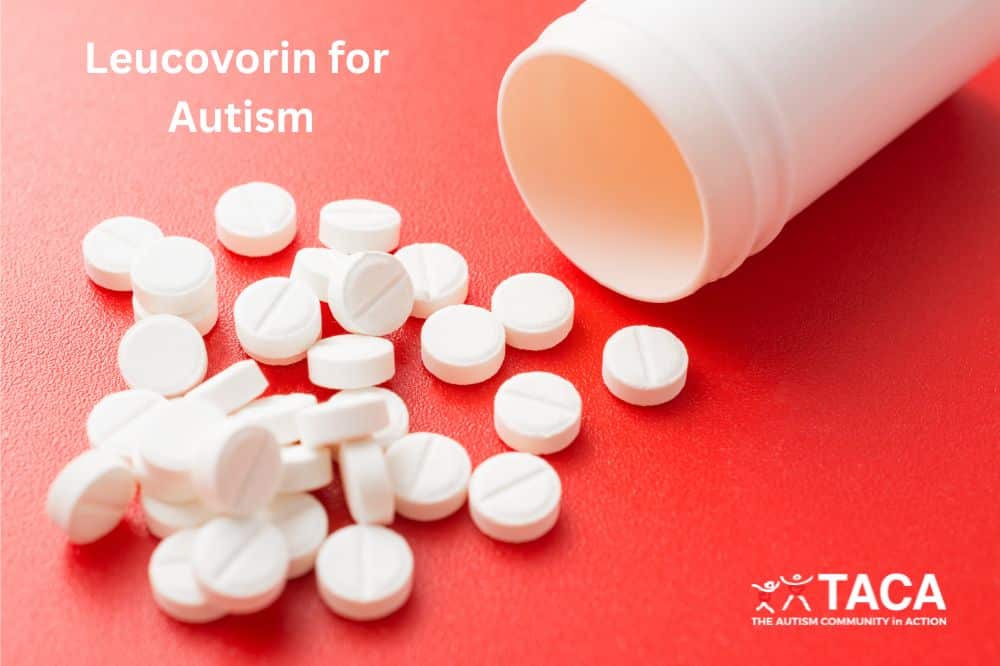Tips for Successful Blood Draws

All contents of this resource were created for informational purposes only and are not intended to be a substitute for professional advice, diagnosis, or treatment. Always seek the advice of your physician, therapist, or other qualified health providers with any questions or concerns you may have.
Blood draws are a necessary part of lab work that can help identify underlying medical needs in individuals with autism. While some labs can be done through urine analysis, stool samples, or swabs, there is important information that can only be obtained through blood analysis.
If your child struggles too much during a blood draw, they may get bruised, the phlebotomist may not be able to find a vein, or the sample may become haemolysed, rendering it unusable. For this reason, everyone wants the process to go smoothly.
These tips can help prepare your loved one for the experience, reduce pain and irritation, and make the process as efficient as possible.
This article will include:
- Where to go for blood draws
- Accommodations to request
- Advanced Preparation
- Tools to make the blood draw easier
- Strategies to ease the blood draw experience
Where to get a blood draw
A phlebotomist is a person who draws blood. Here are the places you can find one:
Doctor’s office
Some doctors can do blood draws in their office if they have a lab on-site. Be sure to ask if the in-office lab is in network for your insurance.
Local Lab
Major labs such as Labcorp and Quest have offices that you can visit with lab orders from your doctor. It may be helpful to ask locally for recommendations of locations that have staff who are especially helpful for individuals with special needs.
Specialty Lab
Pediatric hospitals will often have a specialty lab that will provide blood draws. These individuals tend to be more trained to help support the needs of pediatric individuals.
Commercial Lab
If you have a specialty lab test kit such as the FRAT, Spectracell, or Igenex, then you may need to use a commercial, franchised lab such as “Any Lab Test Now”. Please note that they will charge you for the draw because these labs are not covered by insurance. For specialty tests, you can also look into a mobile phlebotomist. See below for more info.
Mobile Phlebotomist
Mobile phlebotomist companies send trained individuals to your home to do a blood draw and then submit the specimen to the appropriate labs. The blood draw is usually paid out of pocket, but the labs submitted should be covered by your insurance if the lab used and the tests run are covered by your insurance. (Insurance may cover the mobile phlebotomist if medically necessary and run through a lab that will send out phlebotomists). This option is helpful for those with severe anxiety, sensory issues, or mobility concerns.
Popular mobile phlebotomist options include:
Additionally, local special needs families or your doctor may know other phlebotomists to consider.
Accommodations
You may want to call the lab or phlebotomist in advance to request accommodations for the individual receiving the blood draw. These might include things such as:
For pediatric individuals:
- Children’s hospitals may have a specialty lab that is able to provide accommodations.
- Ask about a child life specialist to assist.
- Also, children’s hospitals that have transition programs for young adults with complex medical needs may continue offering specialty labs for patients into their twenties.
For adults:
- Some larger hospitals and academic medical centers (especially those with neurodevelopmental or behavioral health clinics) have adult-friendly labs or special accommodations, often coordinated through adult developmental medicine programs, behavioral health units, or psychiatry or neurology clinics.
Advanced Preparation
There are numerous things a parent can do to prepare their child, teen, or young adult for a blood draw. We will cover them below.
Social Stories
Social stories can help explain what a blood draw is, why it is helpful, where it will take place, who will be involved, what tools they will use, and what the process will be. Reading through these customized stories can help introduce the experience and what to expect. To personalize the social story, you can incorporate pictures from the actual facility, tools that will be used, comfort objects, and rewards.
- This article provides more on building a social story:
- Blood Draw Social Stories:
Role-Playing
Simulating the blood draw process at home using dolls or mock equipment can familiarize the individual with the procedure, reducing anxiety.
Watching Videos
Watching others get blood draws can greatly reduce anxiety because it tells your loved one what to expect.
- Video for individuals with autism preparing for a blood draw
- Video to help caregivers understand the steps involved for a blood draw for those diagnosed with autism.
- In Season 5, Episode 11, titled “Daniel Goes to the Hospital,” Daniel is nervous about his first hospital visit for an ear operation. With support from his parents and hospital staff, he learns what to expect and how to manage his feelings. While the episode doesn’t specifically depict a blood draw, it effectively addresses children’s common anxieties about medical procedures.
Books
- Going to the Phlebotomist by Christina Toy
Here is a YouTube video of this book being read aloud. - Today I’m Having a Blood Draw by Lisa Wylie
This book explains the blood draw process in a child-friendly manner, aiming to alleviate fears by detailing each step in an approachable way. - Alice and the Blood Tests: How to Overcome the Fear of Blood Draw by Marco Baccarani
Suitable for children aged 3 to 10, this book uses a gentle narrative to transform fear into empowerment, guiding young readers through the experience of blood tests. - Blood Soup by Jessica Wilfore
Written by a Certified Child Life Specialist, this book helps children understand their bodies and medical procedures, making it particularly useful for those facing blood draws or a new diagnosis.

Tools to Make Blood Draws Easier
There are some fabulous tools that may help our ultra-sensitive kids with blood draws.
Buzzy Bee
This device uses vibration to distract the nervous system and cold to numb the skin before blood draws. A pediatric specialty center, doctor’s office or phlebotomist may have one to utilize, or you can purchase one on Amazon.
Lidocaine or EMLA cream
Lidocaine cream or spray, or prescription EMLA cream can be used in advance of the blood draw to help numb the area where the needle will be inserted.
Both are applied to the skin and take 30 to 60 minutes to numb the area. You can put cling wrap, or a cotton swab and medical tape over the area to keep it protected. The phlebotomist will wipe off the cream before the draw.
- EMLA cream: A mixture of lidocaine (2.5%) and prilocaine (2.5%).
- Lidocaine cream (4–5%): A single anesthetic agent.
J-Tip
J-Tip is a needle-free, CO₂-powered injector that delivers lidocaine (a numbing medicine) directly under the skin with a quick burst of pressure. It’s especially used in pediatric and high-anxiety patients before needle procedures like blood draws or IV insertions. You can request a J-Tip at hospitals or clinics, but not all providers carry it, so it’s best to call ahead.
Butterfly Needle
This is a smaller needle than typically used and has wings and flexible tubing that connect to the collection vial. The profile of the needle is less intimidating; it can increase the phlebotomist’s precision, and the flexible tubing means there is less tugging on the needle. However, because of the narrow tubing, the draw may take slightly longer. Additionally, you may need to request this type of needle.
Strategies to ease the blood draw experience
Consider these strategies to make the blood draw experience easier.
Fasting/Medications/Supplements
Check with your doctor to find out if any of the ordered labs require your loved one to fast before the draw or to avoid any medications, supplements, or food. If you are using a specialty lab kit, you may want to refer to the lab’s website or call to answer any questions.
Hydrate well
Hydration before a blood draw helps make your veins more plump and easier to find and puncture. It also increases the blood flow, reduces the risk of fainting, and may decrease discomfort.
- For children, aim for at least 1–2 cups (8–16 oz) of water over the hour or two before the blood draw.
- For adults, drinking at least 16–24 oz (2–3 cups) of water in the same time frame is generally sufficient.
What to wear
Veins are easier to find when they are warm. A short-sleeved shirt under a long-sleeved jacket or shirt that buttons or zips in front and can be easily removed can give the nurse easy access to the arm and veins.
Being Still
Keeping the arm still helps the entire process go more quickly and smoothly. Think through before your appointment what may work best for keeping your child still.
For younger patients, they may sit in the lap of the caregiver and the caregiver may give them a bear hug while the staff holds the arm straight. Older individuals may need multiple individuals to help them be still. Consider in advance if you need additional people to accompany you.
Here are some tips to help keep the patient still:
Conclusion
At TACA, we understand that getting while getting regular blood draws is necessary, they can also be stressful. However, collectively utilizing these tips can significantly lessen your loved one’s anxiety. Understanding where to go, asking for accommodations, fully preparing your loved one, bringing appropriate tools, and executing targeted strategies can make this process much less traumatizing. And of course, with repeated practice, it will get easier.
Additional Resources
- Lurie Children’s Hospital Blood Draw Prep Book
- A visual guide that walks children through the blood draw process step-by-step, helping them know what to expect.
- Seattle Children’s Hospital Photo Books
- These resources include photo books that depict common patient experiences, such as blood draws, to familiarize children with the procedures.
- Children’s Hospital of Philadelphia’s Guide
- Prepare for a blood draw – interactive guide for children
- How to help your child cope with a blood draw




